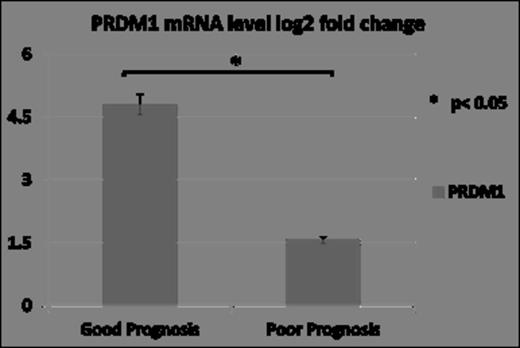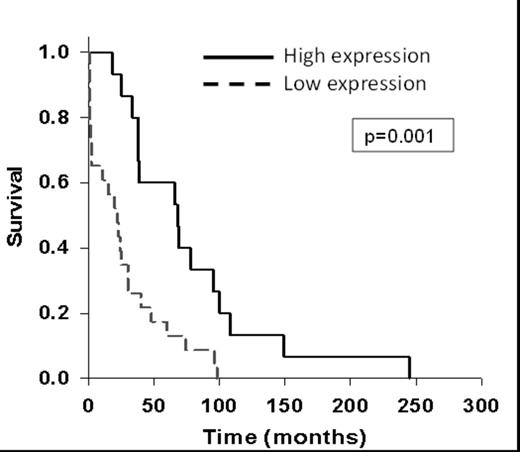Abstract
Chronic Lymphocytic Leukemia (CLL) represents the most common adult leukemia in western countries, affecting approximately 10,000 individuals every year in United States of America. In order to develop effective therapeutic strategies there is a need to understand the precise molecular events associated with CLL development and progression. In an attempt to understand the process we performed transcriptome analysis of CLL cells from peripheral blood (PB) of 7 good prognosis and 8 poor prognosis patients. Additionally to validate the results further, we have utilized gene expression profiling data of CLL cells from 77 good or poor prognosis patients. Using transcriptome and gene expression profiling, we identified PR Domain Zinc Finger Protein1 (PRDM1) as one of the candidate tumor suppressor genes in CLL. PRDM1/BLIMP1 is a transcriptional repressor which is crucial for terminal differentiation of mature B cells into plasma cells. PRDM1 has been shown to promote differentiation by repressing genes essential for B cell receptor signaling and cellular proliferation. Our results demonstrated that PRDM1 expression was significantly (p < 0.05) decreased in CLL cells from poor prognosis compared to good prognosis CLL cases (Figure 1). In addition, to determine the clinical significance, the expression levels of PRDM1 were found to correlate with time to treatment in CLL patients (Figure 2). Lower expression of PRDM1 was associated (p=0.001) with shorter time to treatment in CLL (n = 40). Furthermore, using IPA analyses we identified PRDM1 interacting partners. Among those, there was increased expression of BCL2, PAX5, EHMT2, SPIB and decreased expression of BCL6, IRF4, BCR, CASP3, pFOS, TP53 and HDAC2 in CLL cells from poor prognosis patients in comparison with good prognosis. Also we have observed the differential expression of TLE1, a co-repressor molecule associated with PRDM1 and member of the Groucho family of proteins.
Together these results are suggestive of a role for PRDM1 as a negative regulator of CLL aggressiveness and progression. These studies warranted additional investigation to elucidate the mechanism of PRDM1 mediated CLL progression and to identify a therapeutic target.
Disclosures:
No relevant conflicts of interest to declare.
Author notes
*
Asterisk with author names denotes non-ASH members.
© 2013 by The American Society of Hematology
2013



This feature is available to Subscribers Only
Sign In or Create an Account Close Modal